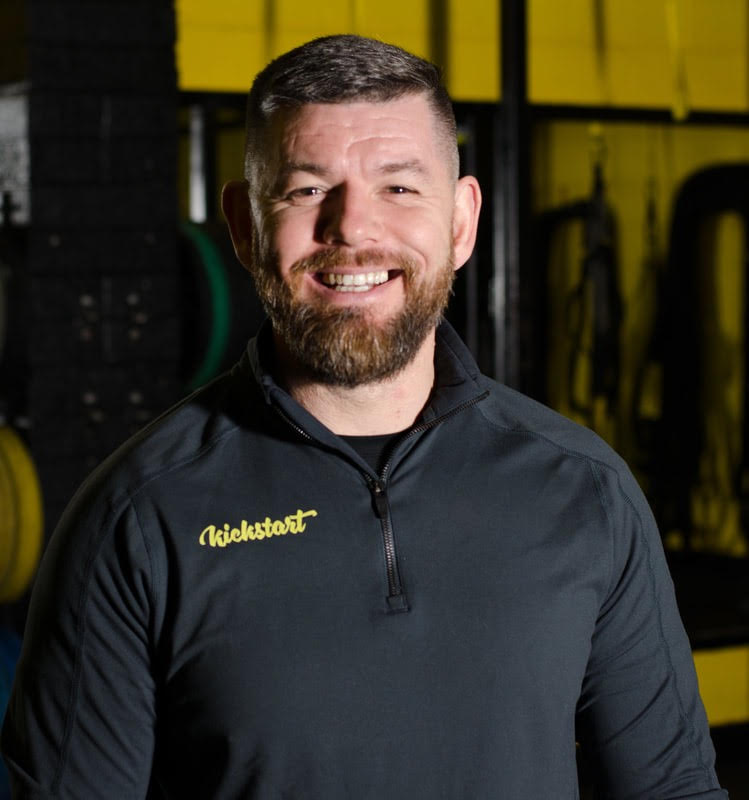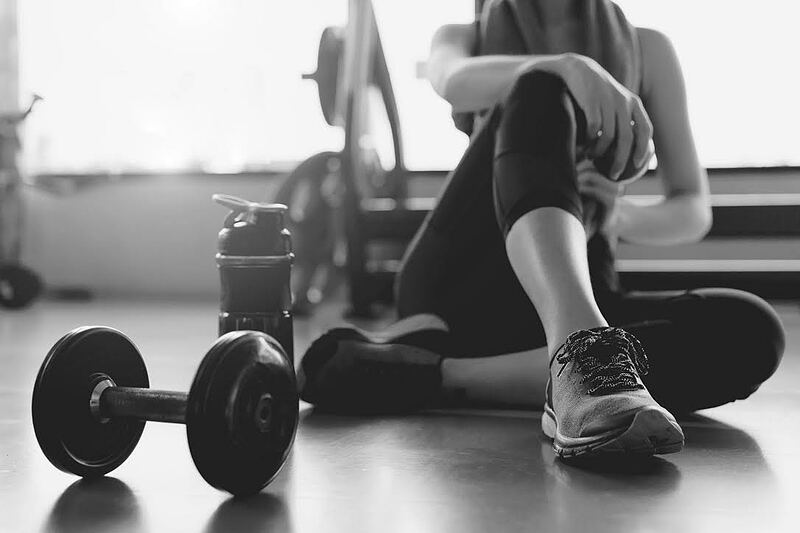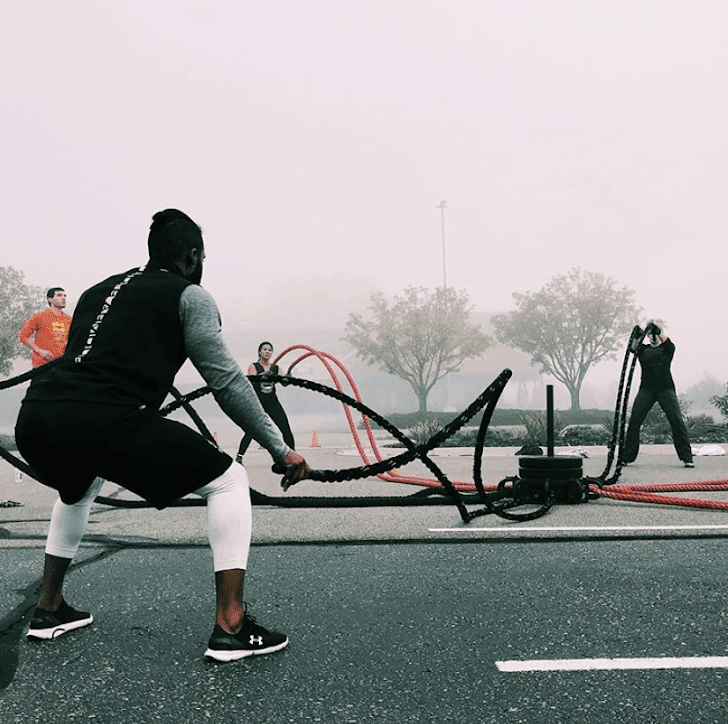How to Create a Rich Experience and Learning Environment for Your Athletes
Coach DevelopmentABOUT THE AUTHOR

Darren Dillon
Darren Dillon is the owner and director of Kickstart Fitness Ireland. Founded in 2010, Kickstart Fitness has grown from what was initially a bootcamp in a local park into what is now a center of excellence for TRX®️Training and functional training, and a high performance hub for strength and conditioning. Darren also serves as head of performance at Shamrock Rovers FC, working with and programming for the academy through to senior professional soccer players. He is also Ireland’s only official TRX®️ Master Trainer, delivering all the company’s education courses to the Irish fitness industry.
In my coaching practice, I use tools like the TRX Suspension, Rip, and Duo Trainers, as well as kettlebells and barbells to help my athletes meet their goals. While these implements are an important part of the puzzle, it’s ultimately a people business.
This means that we could have the fanciest gear in the world, but if we’re not making our members feel comfortable, valued, and at ease in an environment that’s conducive to skill development, we’re never going to achieve anything (or, for that matter, be able to attract and retain enough clients to keep the lights on).
That’s why we take very deliberate steps to create the best experience possible.
There’s a reason that Apple has a legendary reputation for ease and simplicity. It’s not just about the elegance of its product design, but also what you get when you open the well-presented box. There’s not a bunch of junk you don’t need, a jumble of cords, or an Encyclopedia Britannica-size manual. Instead, your MacBook or iPhone is set amidst minimal white cardboard that looks more expensive than the standard brown box fare. When you turn it on, it’s already fully charged. The user interface is intuitive enough that you can get started right away. And the only accessories are the ones you need, like a power cord with the MacBook and wall charger with the iPhone.
We’re not in the technology business, but my fellow coaches and I take the design element of what we do just as seriously as the folks at Apple HQ.
This doesn’t just mean gym layout, how we arrange our equipment, and the spaces that let people flow…although we do think about these things. More so, it’s about working backwards from how we want people to feel when they walk in the front door: welcome, safe, and part of a supportive community. Then we consider how we’re going to shape an environment and deliver an experience that will elicit such feelings.
// Connecting Over Connect 4

Let’s be logical and start at the beginning. When you go to the doctor for a checkup or shot, you naturally feel a bit apprehensive, and even more so if you’re heading into a hospital for something more serious. To put you at ease, the staff lay out magazines, line the walls with pictures of natural scenes (which research shows can relax us within a minute of looking at them), and probably add the obligatory fish tank as a visual distraction. Many also have Legos and a box of toys to distract sick kids and keep them occupied, so they don’t stress out while waiting for the doctor or fixate on what’s about to happen.
At Kickstart, we’re not about to give somebody an injection, look down their throat, or do any of those other doctor-type things we all dread. But if they’re a prospective or new member who’s coming in for the first or second time, they may well still be nervous because it’s a novel setting and they don’t know what to expect. Or maybe they’ve tried other gyms before and had a string of negative experiences.
They’re also in a transition stage in their life. Yes, they might want to get fitter or stronger, so they’re shooting for positive change. But this means that they’re dissatisfied with either how they look or how they’re performing at the moment, which leaves them vulnerable. They might well know what they want to achieve, but at this early stage, they’re often unsure of how to get there.
So it’s our job to make them feel comfortable and create a positive initial experience that will largely define whether they come back or not.
The best way we’ve found to do this is to put a board game at each of the tables in our reception area. There’s Jenga on a couple, Connect 4 on two, Checkers on another. You’d be amazed at just how many people jump right into playing these games, often with complete strangers. When I or another coach walk through, we join in the fun, too. This isn’t an isolated event, but has positive knock-ons. Now two people have taken the first step in starting a friendship, they’re more likely to greet each other during a workout, on their way in or out, or even somewhere other than the gym. A lot of people these days struggle with social anxiety and playing a quick game is a great way to forget feeling awkward and break the ice.
Next comes what happens before and during the actual workouts. We try to pair people up with others who they haven’t trained with before when possible, and say something like, “You might want to introduce yourself to your partner before you get sweaty for the next hour.” We encourage our members to lift one another up and challenge their training buddies once the hard work starts.
The coaches have the same attitude. We like to push people because that’s the place where development occurs, but it’s done in a caring and nurturing way. We also make sure that our clients have solid technique before they start adding speed, load, or reps, so they’ve got a solid foundation to build on as they become more skilled.
Like in a school or any group environment, cliques can start to form pretty quickly. All the coaches keep an eye on such dynamics, and make sure that if a sub-group has formed, it’s positive and encouraging. In which case, good, as we all need people to hold us accountable and support our progress. But if a clique is intimidating other members (like in Mean Girls, Clueless, or just about every other high school movie ever made) or has created an exclusionary in-group/out-group vibe, then we do our best to break it up.

// Scales in the Gym? No Weigh.
We’ve recently taken great pains to change and improve our six-week programs as well. Previously, we’d have people weigh themselves and sometimes take body composition measurements, so we had a baseline to compare as we moved through the initiative. But what we found was that while people might lose 15 or 16 inches total from various body parts (waist, arms, etc.), would have more energy, and would post PRs in multiple exercises, they’d often be disheartened because they only lost a few pounds of body weight. One of the reasons is that while they’d initially shed “bad” weight, they’d soon start building muscle, which weighs more than fat.
So when we sat down to troubleshoot our programs, the other coaches and I recognized that we should remove this negative impression by reframing what success looks like for our clients.
The first thing to do would be to institute a hard and fast “no weigh” policy for all our programs (yes, even those weight loss-type ones that most gyms offer). This way (pun intended), we’d remove the chance of people being disappointed by daily weigh-ins.
Instead, we’d have them focus their before/after comparisons on how they felt, their competence and confidence, and their performance. Sure, they might lose enough weight that they re-shape their body and can then treat themselves to some new clothes. But it will no longer be all about what the scale says, because that’s a very limiting view. So out went our scales.
When we first introduced this shift to the members who’d signed up for our annual New Year’s “get back in shape” program, we were nervous to see how they’d react. After all, we’d always done daily weighing in the past. So it was great when we said that there’d be no more stepping on the scales and everybody cheered. They also reacted positively to the new way that we’d measure success, both qualitative and quantitative.
How you frame expectations largely dictates how they perceive the outcome, and we know that while excess body weight is the most important predictor of major diseases, there are so many other ways to give people a feeling of achievement and success than simply registering their weight before and after a program.
Even seemingly small things like setting a squat or deadlift PR can create a feeling of self-confidence that spreads far beyond the four walls of the gym. We also want our clients to transcend body image in how they define themselves. We’re in the business of creating healthier, more capable, and more resilient human beings, and this program reshuffle aligns better with this.
// Cultivating Culture and Community
When they enter the gym, everyone sees a picture wall with photos of our offsite group events. The one that people have been most excited about recently is us reaching the summits of Ireland’s seven highest mountains over the past two years. These are hardly Everest expeditions, but we can’t have 60 people go up and only 40 come back down! While the climbing isn’t that hard, it’s more about bringing everyone together for a new challenge that doesn’t involve pushups, pullups, and kettlebell swings. Plus, it’s nice for members to meet each other’s family members and to create friendships that carry over into everyday life.
It’s also important for the coaches to remember that we live in a pretty tight-knit place where everybody knows everyone else. We bump into our clients during school drop-off and pickup, at the grocery store, and at the shopping center – and every interaction is an opportunity to solidify the values we encourage at the gym. It’s vital that we practice what we preach at all times, so you can’t give someone the finger when you’re driving or get drunk and start pushing and shoving at the pub because that will reflect poorly not just on you, but also on the gym and what we stand for.
As Damian Hughes writes in The Barcelona Way, culture isn’t one individual thing, but rather the culmination of a thousand little actions. It’s our duty to be consistent in what we practice and preach, and to keep our members’ best interests at the center of everything we say and do. This way, we can earn their trust and help them achieve the positive changes they’re after when they first walk in the doors.
It’s amazing to think that while a Jenga tower can collapse in a moment, it can also help us build something that endures. As John Wooden once said, “A good coach can change a game. A great coach can change a life.”
Are you a better coach after reading this?
More coaches and athletes than ever are reading the TrainHeroic blog, and it’s our mission to support them with useful training & coaching content. If you found this article useful, please take a moment to share it on social media, engage with the author, and link to this article on your own blog or any forums you post on.
Be Your Best,
TrainHeroic Content Team
HEROIC SOCIAL
HEROIC SOCIAL
TRAINING LAB
Access the latest articles, reviews, and case studies from the top strength and conditioning minds in the TH Training Lab

